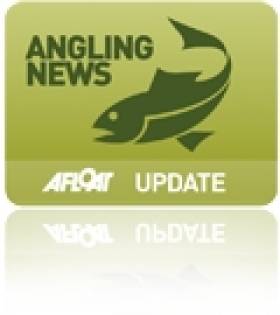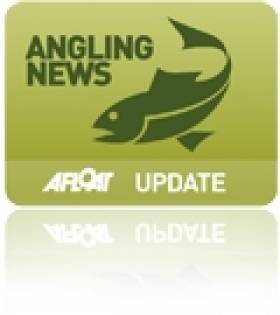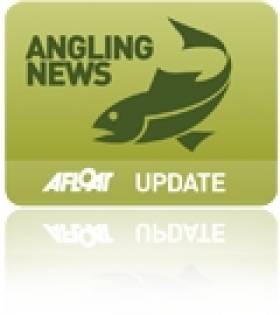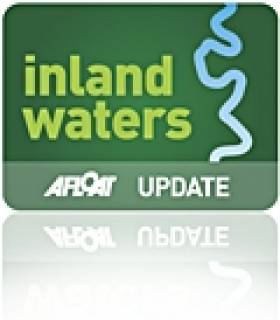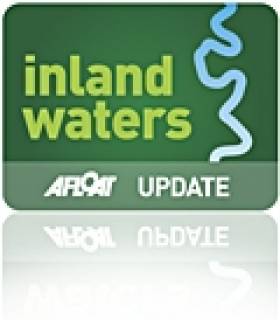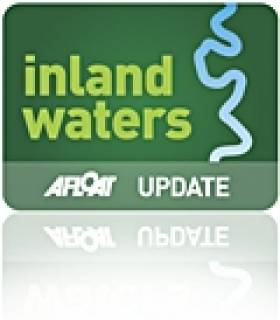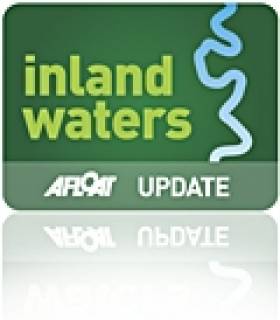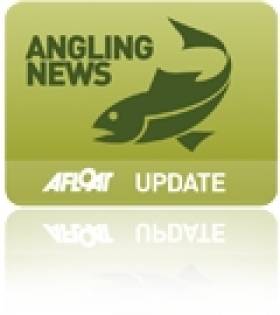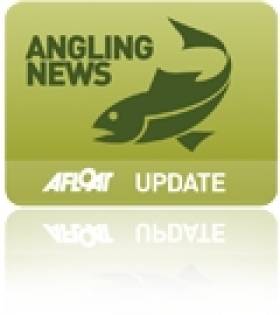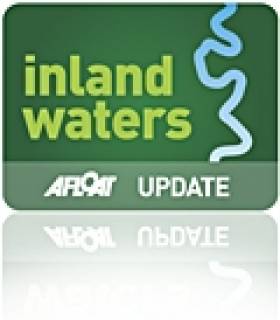Displaying items by tag: fish kill
Inland Fisheries Ireland Monitors River Loobagh Pollution
#angling – Inland Fisheries Ireland (IFI) is today continuing to monitor an incident of pollution on the River Loobagh in Limerick, which resulted in an extensive fish kill earlier this week.
On 4th August 2014, IFI received a report from local anglers in Kilmallock that the River Loobagh at Riversfield Bridge, near the Limerick County Council water treatment plant, was in a polluted condition and dead fish could be seen. The River Loobagh is an important fishery, primarily for brown trout, but also for salmon which seemed to be returning to the river in small numbers.
A discharge of effluent into the River Loobagh was located, and the source was traced to an over ground steel slurry tank on a nearby farm. Once IFI contacted the farm owner, works immediately proceeded to prevent further discharge and the flow of effluent was intercepted at a number of locations, effectively preventing further discharge.
A series of samples were taken which have been sent for analysis. Pending the results of the analysis a decision will be made by IFI concerning a prosecution and any other legal actions that may be warranted.
IFI staff carried out a visual inspection of the River Loobagh to determine the extent of the fish kill. Further to this, approximately 555 fish were observed to be dead, with an additional 95 fish found by the local angling club. The majority of the fish were brown trout, as well as a small number of juvenile salmon.
IFI is continuing to work with both the farmer and Limerick County Council to ensure that no further pollution can arise and that all appropriate remedial action is taken. IFI will continue to monitor the situation and ensure that any pollution risk is removed.
Inland Fisheries Ireland (IFI) has a confidential hotline number to enable members of the general public to report incidents - 1890 34 74 24 or 1890 FISH 24. This phone line is designed to encourage the reporting of incidents of illegal fishing, water pollution and invasive species.
#fishkill – Inland Fisheries Ireland and Dublin City Council are today (23.07.14) continuing to monitor the River Tolka following a significant pollution incident which occurred yesterday, Tuesday 22nd July.
A definite line of inquiry is being followed in relation to the source of the pollution incident which resulted in an extensive fish kill in the river.
Further samples have been taken and analysis is ongoing.
Dublin City Council has also removed a boom wall barrier which it erected across the River Tolka at Griffith Park yesterday to contain the pollutant as this is no longer required.
Inland Fisheries Ireland (IFI) has a confidential hotline number to enable members of the general public to report incidents - 1890 34 74 24 or 1890 FISH 24. This phone line is designed to encourage the reporting of incidents of illegal fishing, water pollution and invasive species.
Fish Kill on Dublin's River Tolka to be Investigated
#fishkill – Inland Fisheries Ireland and Dublin City Council are today (22.07.14) investigating an extensive fish kill on the River Tolka in Dublin City.
The latest indications are that the fish kill extends from an area in the vicinity of Finglas Road Bridge for a considerable distance downstream. The full extent of the kill has yet to be quantified.
Inland Fisheries Ireland and Dublin City Council are continuing their emergency response and associated investigations in an effort to establish the source of any contaminating material that may have caused this major pollution event.
Inland Fisheries Ireland (IFI) has a freefone number to enable members of the general public to report incidents - 1890 34 74 24 or 1890 FISH 24. This phone line is designed to encourage the reporting of incidents of illegal fishing, water pollution and invasive species.
Fisheries Officers Investigate Cavan Fish Kill
#FishKill - Inland Fisheries Ireland (IFI) received reports of a fish kill on the River Lear in Baileborough, Co Cavan last Friday 23 May.
IFI staff responded immediately to the report and their investigations revealed approximately 35 dead brown trout and roach on this tributary of Castle Lake.
The kill extended over 2km, from just upstream of Lear Bridge (on the Baileborough to Shercock Road) as far as Castle Lake.
Water samples were taken from a number of locations along the affected stretch and IFI are awaiting results. Subsequent reports of dead fish in Castle Lake have been received by IFI.
Cavan County Council, who was informed of the fish kill by IFI, has launched its own separate investigation. IFI has also informed the Environmental Protection Agency (EPA).
During the course of their investigations, IFI staff also found a number of dead trout in a field adjoining the River Lear and a separate investigation has commenced to establish to how these fish came to be at this location.
IFI is particularly concerned about these incidents on the River Lear as there have been a number of fish kills here in the past, especially during low flow and high temperature events.
Farmer Pleads Guilty To Pollution Causing Carlow Fish Kill
#FishKill - A Carlow farmer has pleaded guilty to the accidental discharge of 'deleterious matter' into the River Burren at Cloontoose on 10 June last year, resulting in a fish kill that cost as many as 5,000 brown trout.
At a sitting of the District Court at Carlow Court House on Thursday 2 January, Judge O’Brien awarded costs of €2,135 to Inland Fisheries Ireland (IFI) and ordered that the farmer pay a contribution for habitat works.
The incident related to the release of fungicide to the river during the filling a a crop sprayer.
Donnachadh Byrne, senior fisheries environmental officer with IFI, told Judge O’Brien that following receipt of a fish kill report from Carlow County Council on Monday 10 June, IFI carried out investigations on the River Burren and had established that the fish kill extended over 4.2km with an estimate of 4,000-5,000 dead brown trout.
Giving details of sampling and analysis undertaken, Byrne confirmed that samples of dead fish taken from the Burren River when sent for analysis were found to have elevated concentrations of Pyraclostrobin, one of the main active ingredients of the fungicide Lumen, used to treat barley or oats, which was being used by the defendant.
The court was informed that the spillage of fungicides to the Burren River was accidental and related to a non-return valve which upon later inspection was found to be faulty,
These facts were acknowledged by IFI, who also confirmed that the defendant was fully co-operative at all times during the investigation.
The Burren River fish kill which extended over 4.2 kilometres, related to a relatively small discharge of pesticide to the Burren River.
IFI said the incident highlights the extreme toxicity of certain pesticides to the aquatic environment, as what was a relatively small discharge of pesticide extended to a stretch of more than 4.2km of the watercourse.
Construction Firm Convicted Over River Dodder Fish Kill
#FishKill - Inland Fisheries Ireland has secured a successful prosecution of a Galway-based construction company over a fish kill on the River Dodder in South Dublin earlier this year.
Ward and Burke Construction Ltd of Stradbally East, Kilcolgan, Co Galway was convicted and fined €2,000 by Judge William Hamill at a sitting of the District Court at the Four Courts on Monday 14 October.
The judge found in favour of Inland Fisheries Ireland (IFI) who took the prosecution following its investigation into the fish kill, which saw some 500 freshwater fish - including juvenile brown trout, lamprey and stoneloach - deceased over a 2km stretch of the River Dodder in the Tallaght area from below an outfall from Boherboy Water Supply Pipeline to a point upstream of Firhouse Weir.
Giving details of the sampling and analysis undertaken, IFI fisheries environmental officer Brian Beckett confirmed the discharge from the water supply pipeline to the Dodder was characterised by seriously elevated levels of chlorine.
Beckett said that on the afternoon of 1 March 2013, he instructed staff from Ward and Burke Construction Ltd to immediately terminate the discharge, and prevent all remaining effluent residues from entering the watercourse. Ward and Burke staff were found to be fully co-operative at all times during the investigation.
Legal representatives for Ward and Burke who had earlier told Judge Hamill there was a plea in the matter said that the discharge occurred as a result of human error, and as soon as this had come to their attention they had taken steps to prevent any further discharge.
It was also submitted that the construction firm had committed to provision of a sum of money to cover restocking or other appropriate costs to mitigate against damage caused as a result of the discharge.
Judge Hamill convicted Ward and Burke Construction Ltd and imposed a fine of €2000 and awarded legal costs and expenses to Inland Fisheries Ireland.
IFI Investigates Fish Kills In Longford Town, Lough Keeldra
#FishKill - Staff with Inland Fisheries Ireland (IFI) are investigating two separate fish kill incidents on Lough Keeldra in Co Leitrim and in the Camlin River in Longford town.
Considerable numbers of dead perch were recorded at Lough Keeldra, outside Mohill, following a report to IFI on 10 September. Live fish also observed in the lake were noted to be in distress.
The presence of blue/green algae is currently being considered as part of the investigations. Lough Keeldra is a designated bathing area and signs erected by Leitrim County Council prohibit bathing at present.
Elsewhere, more than 2,000 fish mortalities were recorded over a 6km stretch of the Camlin River from Cartron Bridge downstream as far as the confluence with the River Shannon after IFI staff began their investigation on 4 September following a tip-off from the public.
Brown trout, roach, pike, eel and white-clawed crayfish were among the dead fish discovered, although live fish have since been recorded within the affected area.
Water samples have been taken for analysis and IFI continuing with its investigation to try to identify the source of the pollution that caused the fish kill. This may not be possible given the fact that the fish kill is believed to have occurred on the weekend of the 1 September.
Members of the public are being urged to note that after a prolonged period of low flow levels and unseasonably high water temperatures, all aquatic life - but especially fish - are extremely vulnerable to the slightest deterioration in water quality.
Landowners and the owners of any premises or property that adjoins a watercourse should take particular care to ensure that every reasonable measure is taken to minimise any threat to water quality and fish life.
IFI is appealing to the public to report any incident or suspected incident of pollution or deterioration of water quality and sightings of distressed fish.
Amanda Mooney, director for the Shannon River Basin District, said: “Whether an incident occurs deliberately or inadvertently, it is critical for fish welfare and general water quality that incidents can be dealt with promptly.”
Inland Fisheries Ireland operates a confidential 24 hour hotline and suspected illegal fishing or pollution can be reported to 1890 347 424.
'Fish In Distress' Alert as Water Levels Fall in Heatwave
#Angling - Inland Fisheries Ireland (IFI) is seeking the help of anglers and the general public to report any sightings of distressed fish due to high water temperatures or low water levels.
The national fisheries body also requests that anglers voluntarily cease using keep nets during this period, so as not to cause unintentional distress to fish kept for long periods in these nets.
Reports may be made to the local fisheries offices or the 24-hour hotline number on 1890 34 74 24.
IFI staff will continue to monitor canals, lakes and rivers for any signs of distressed fish in shallow water, but may be able to react more quickly to timely reports received.
"Low water levels and high water temperatures may lead to fish kills," said IFI chief Dr Ciaran Byrne, "and as the temperatures for salmon and trout are perilously hot at the moment, fish kills may be unavoidable. In many instances, moving fish may also prove too stressful.
"Anglers practicing catch and release during this hot spell may wish to consider desisting from fishing until conditions are more favourable."
Minister Fergus O'Dowd also urged anglers and the public to "please be vigilant and help conserve our wonderful inland fisheries resource".
Local Fisheries Offices contacts:
- IFI Swords – 01 884 2600
- IFI Limerick – 061 300 238
- IFI Blackrock – 01 278 7022
- IFI Galway – 091 563 118
- IFI Clonmel – 052 618 0055
- IFI Ballina – 096 22788
- IFI Macroom – 026 41222
- IFI Ballyshannon – 071 985 1435
#Angling - The World Youth Fly Fishing Championship is coming to Ireland's border region next month.
And as the Carrick Times reports, Carrickfergus in Co Antrim is looking forward to hosting part of the event at the Woodford Fly Fishery.
What's more, local lad and Woodford member Darren Crawford will be among the all-Ireland fly fishing squad vying for the international title at the event, co-sponsored by the Loughs Agency and Inland Fisheries Ireland.
Rivers and lakes hosting the competition are spread over the counties of Antrim, Louth, Monaghan, Meath and Tyrone.
In other inland fisheries news, Galway Bay FM reports that testing carried out after a fish kill in Loughrea Lake last month found no evidence of any bacterial or viral outbreak.
The cause of the incident that killed 100 perch in the lake are still unclear, though stresses connected with the spawning season are a distinct possibility.
Loughrea Lake Fish Kill Investigated
#FishKill - Galway Bay FM reports on an investigation into a fish kill discovered in Loughrea Lake yesterday 12 May.
Inland Fisheries Ireland staff have attended the scene after being alerted by the public, discovering some 100 dead perch in the water.
However, it is believed the fish died as a result of a natural phenomenon, as no dead fish of any other species was found.
Such mortalities in the wake of the perch spawning season are not uncommon due to the stresses it puts on the fish, leaving them susceptible to infection.


























